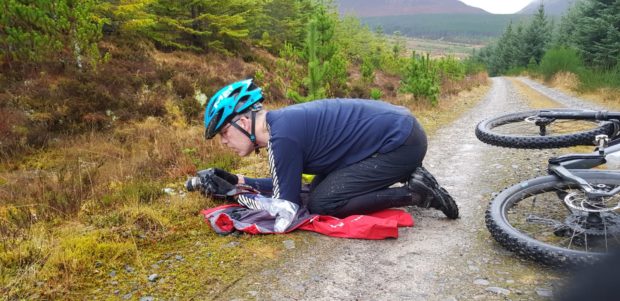An unusual Scandinavian club-shaped lichen has been discovered in Britain for the first time by an expert mountain biker who secretly fancied a rest.
And the Multiclavula corynoides plants, sometimes referred to as the club-wielding crust lichen, were found in the Ben Wyvis National Nature Reserve in the Highlands.
The plant is known to grow across Scandinavia, Iceland and in northern North America, but this is the first record of the species in Britain.
Most lichens are a cup fungus with distinctive circular jam-tart fruit, but this species is different because it forms tiny club-shaped fruits which emerge from a mat of algae and fungal threads.
It was spotted by Scottish National Heritage lichen expert David Genney on the verge of a gravel forest road at the base of Ben Wyvis NNR as he was scanning the ground while out on his bike.
Mr Genney said: “I was out with a couple of friends enjoying a day’s mountain biking around Ben Wyvis.
“While I’m usually focused on the trail ahead and wide mountain views, I also keep half an eye out for interesting plants and fungi, especially on the long, slow uphill sections.
“I suppose I was secretly hoping for an excuse for a rest, so was delighted when I spotted something a little different out of the corner of my eye.
“I recognised it because the Kew Lost and Found Fungi project has been encouraging citizen scientists to look out for rare or under-recorded species.
“They had highlighted a related lichen as one of their target species so things like this were on my radar.
“It’s always exciting to find something you’ve never seen, but for it to be a species that has never been seen in Britain before made my day.”
Mr Genney was happy that the discovery filled a gap in the knowledge about the global distribution of the species of fungus.
He said: “It’s also interesting it was thriving on an old forestry road siding, demonstrating how nature can sometimes benefit from man-made habitats.
“It just shows the importance of keeping your eyes peeled when you’re out and about enjoying the outdoors – you never know what you might discover.”
Further information about the British Lichen Society is available at www.britishlichensociety.org.uk
